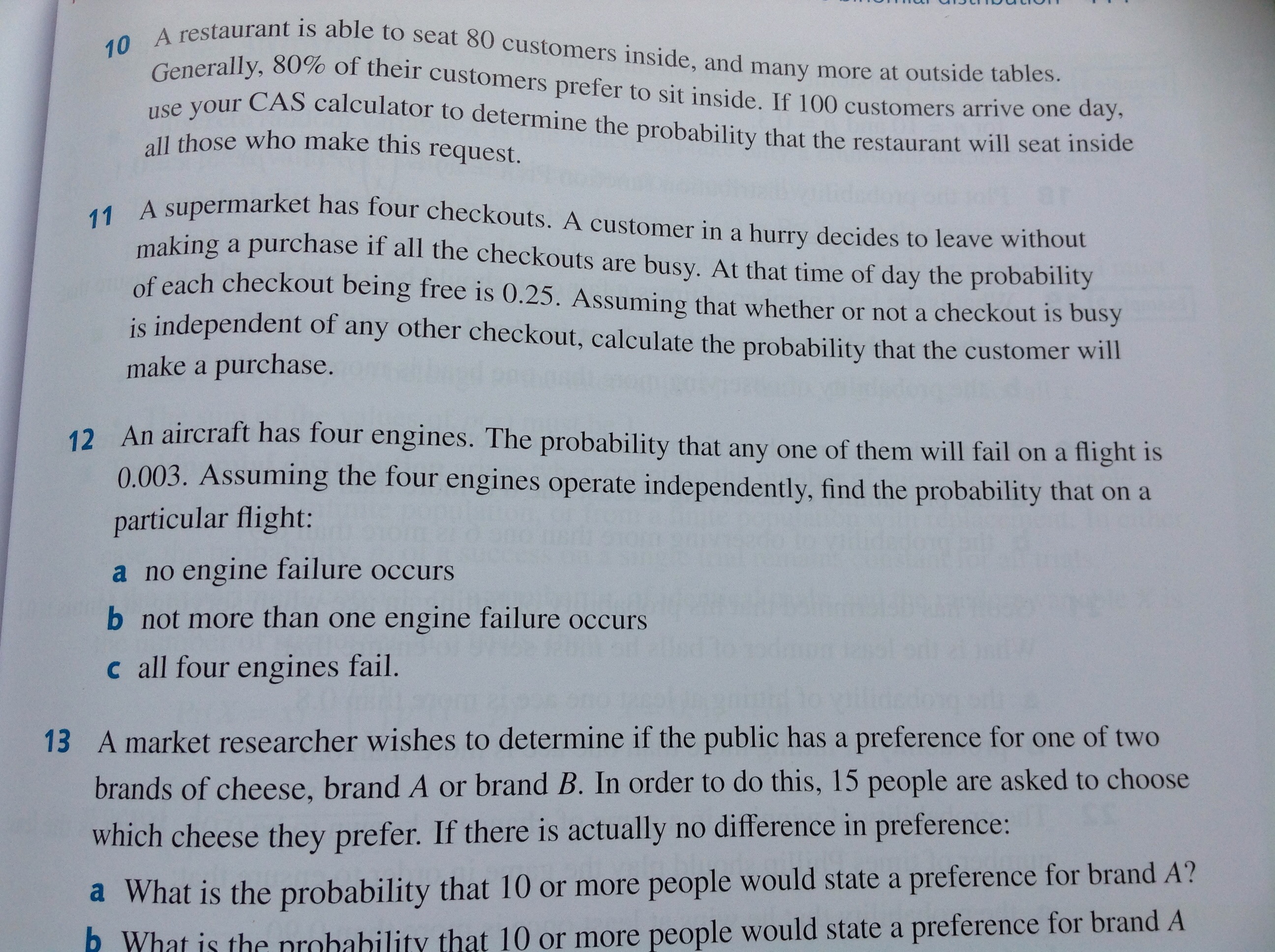How to use bionominal distribution on independent variables?

Can someone please explain to me how to do question 11? Thanks!

Can someone please explain to me how to do question 11? Thanks!
1 Answer
Explanation:
Let's first talk about binomial probability.
The relation I like to start with is
which essentially says that for a given probability
Do we have a situation where we can use the relation? Yes.
We have
Before plugging in the figures, let's talk about the need for the cashiers to be independent of each other. The binomial probability only works if
The probability of our customer making a purchase can be found either by summing up

